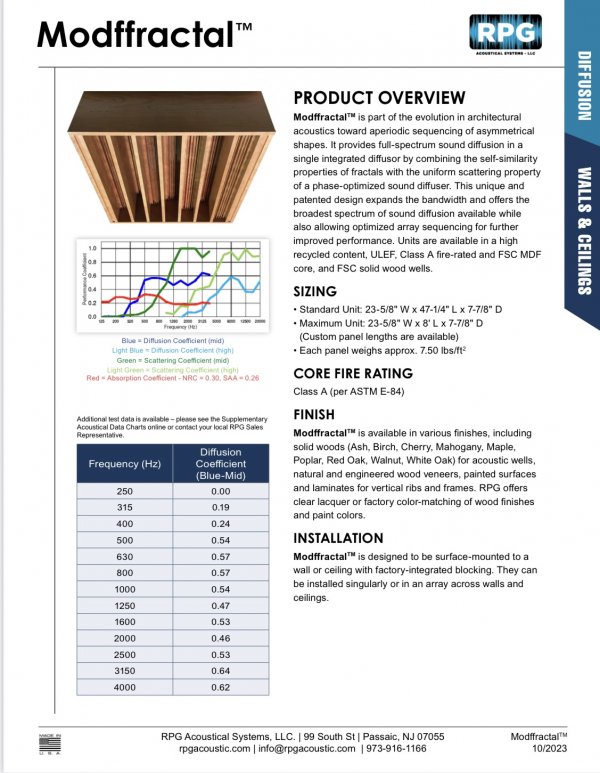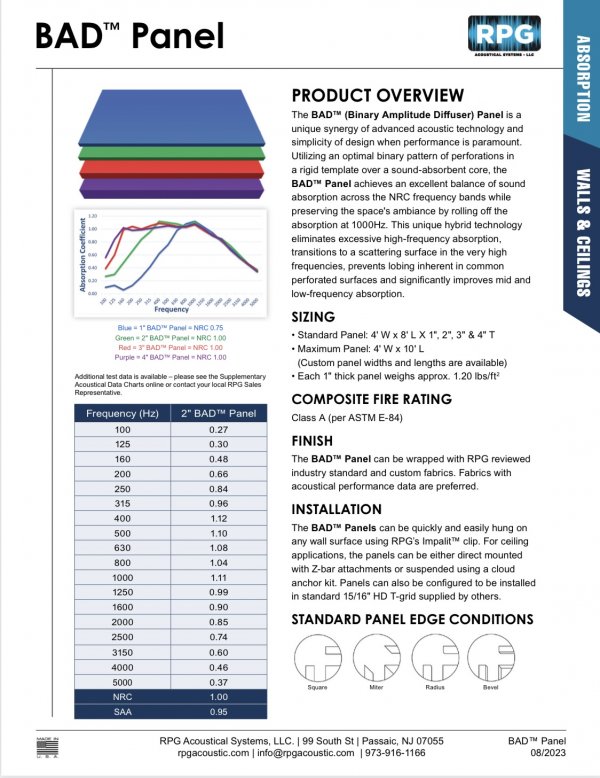Argonaut‘s link to GIK page above shows mostly different variations on BAD panels, with more stylistic diffusion grids than the grid beneath the original RPG BAD panels. (https://www.rpgeurope.com/products/product/bad.html) I am surprised with all the comments I have read in so many places (and my own experience) you'd have opted for strictly absorbing panels at the reflection points (and elsewhere). Friends who’ve used GIK absorbers and then instead have used some of the BAD type panels have always kept the latter and had better results.
Of course, my own room would be more damped than yours given built-in custom BAD panels throughout per Bonnie’s spec, but I’ve not had comments from anyone it is over-damped. The closest to that might have been Daniele of Alsyvox who, when he visited, preferred the curtains in the back of the room to be more opened, which allowed more of the ambient (and reverberant) energy of the stairways and hallways to become part of the acoustic. (That all behind the listening position, similar to your space opening to the side of your room.)
Yes Dipoles are best with front wall behind speakers without treatment or diffusion only ..!



